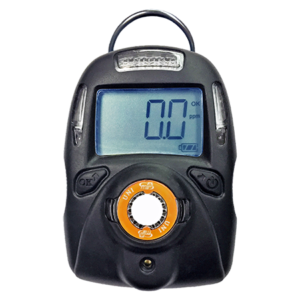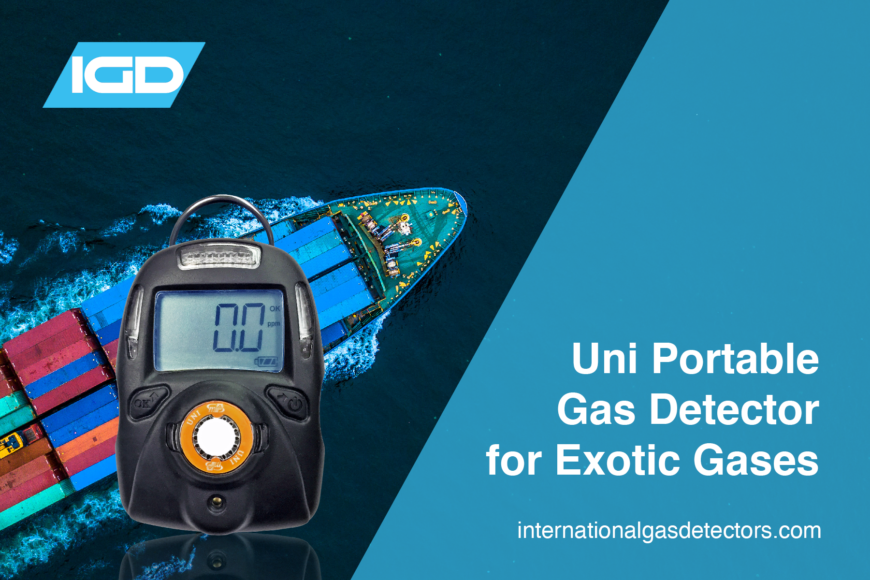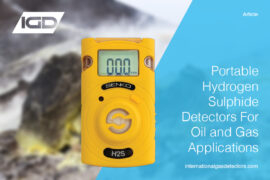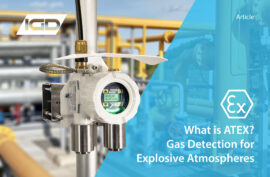Many gases used in research and industry can pose a significant risk for asphyxiation, explosion, and risk of poisoning. Gas detectors are often the first line of defence for these dangers, but selecting the right gas detector for your application can be a challenge. Our article on fixed vs portable detectors, helps users to understand which requirement they need. In this article we are going to focus on portable gas monitors.
There is a wide range of hardware for gas monitoring on the market, including detectors that can detect single or multiple gases. This article will outline the benefits of UNI gas detectors and the applications they are suited to.
Uni Gas Detectors vs. Multi-Gas Detectors
Broadly speaking portable gas detectors come in a couple of configurations multi sensors and single gas detectors (such as the UNI gas portable detector). The choice between these two options is usually based on the application and the hazards onsite.
Some applications pose the risk of multiple gases, and this is where multi-gas detectors are preferable. However, singular detectors are also an extremely effective solution for environments that are at risk from only one gas specifically.
The UNI Gas Portable Monitor
The UNI gas portable monitor has the widest choice of sensors including exotics. It is designed in California by mPower Electronics. Featuring a durable double shot design, the UNI is clip-on detector that has a large display and the capacity for up to 50 event logs. This ensures up-to-date safety information which can be downloaded for health and safety records. In addition to this the UNI utilises the latest battery technology meaning you no longer have to charge the monitor; it will last over 2 years before battery replacement is required. It is a cost-effective, single gas monitor that doesn’t compromise on quality.

This UNI gas portable can be used for the following gases and more:
Uni Gas Detectors for Phosphine (PH3)
Phosphine is a common fumigant used in the shipping industry. Phosphine can be extremely dangerous to those in close proximities and is highly flammable when wet. Those carrying out fumigation or have the potential to be exposed to phosphine gas should use the UNI monitor.
Chlorine (CL2)
Chlorine is often used in cleaning and disinfectant applications and widely used in water treatment such as swimming pools. In addition, chlorine is widely used in the paper production industry to bleach paper white. When chlorine meets moist tissues, it can cause minor irritations and at higher levels, the damage can be severe turning into an acid on contact with water. Using the UNI gas monitor in applications that use chlorine can prevent harm to workers and users.
Chlorine Dioxide (CLO2)
Chlorine dioxide is a chemical compound of one chlorine atom and two oxygen atoms. Chlorine dioxide is used as a disinfectant in water treatment. CLO2 can be hazardous at high concentrations and as such, the UNI gas monitor should be employed by users in confined spaces to ensure CLO2 does not reach such concentrations.
Hydrogen Chloride (HCl)
Hydrogen chloride is used for cleaning, pickling, and electroplating metals as well as in petroleum well extraction. HCl is extremely harmful to humans and is corrosive to skin, eyes, and mucus membranes. Gas detection using the UNI gas monitor ensures that if levels become dangerous, workers are warned.
Hydrogen Cyanide (HCN)
HCN can be used in the military as a chemical warfare agent. It also has commercial uses for electroplating, fumigation, chemical synthesis, mining, and the production of synthetic fibers, plastics, dyes, and pesticides.
The UNI gas monitor is critically important for use with HCN as it interferes with the body’s use of oxygen and may cause serious harm to the brain, blood vessels, lungs, and heart.
Ozone (O3)
Ozone is used in a range of industries such as air purification and drinking water. Ozone is also used in waste treatment and for chemical production. Workers in areas exposed to high levels of ozone could be at significant risk and as such, using the UNI gas monitor is important to ensure levels do not exceed safety.
Find out More:
As well as the gases mentioned in this article, the UNI gas monitor is also used to detect:
- Lead-free Oxygen (O2)
- Inerting Alarms (O2)
- Arsine (AsH3)
- Phosgene (COCl2)
- Hydrogen Fluoride (HF)
- Nitric Oxide (NO)
- Acetaldehyde
- Ethylene Oxide
- Methyl Mercaptan
- Tetrahydrothiophene
Contact us for the Detectably Better Portable Gas Monitor
If you would like to find out more about the benefits of the UNI gas monitor for your application or would like to talk to our team, contact us today here.




